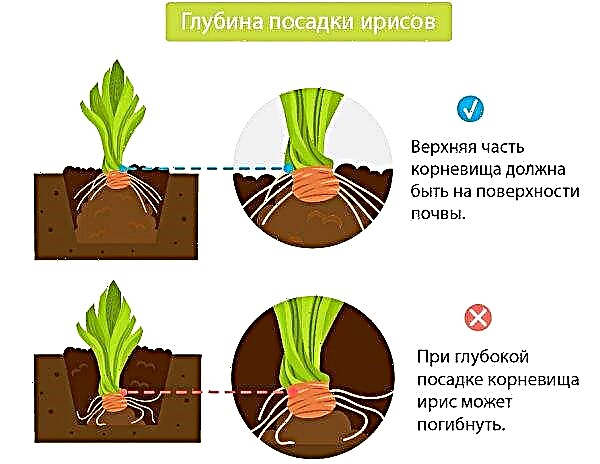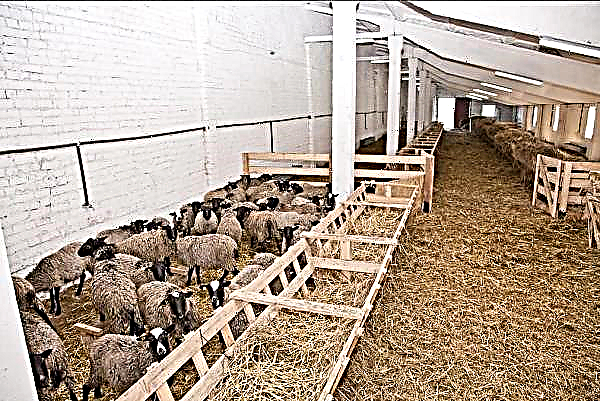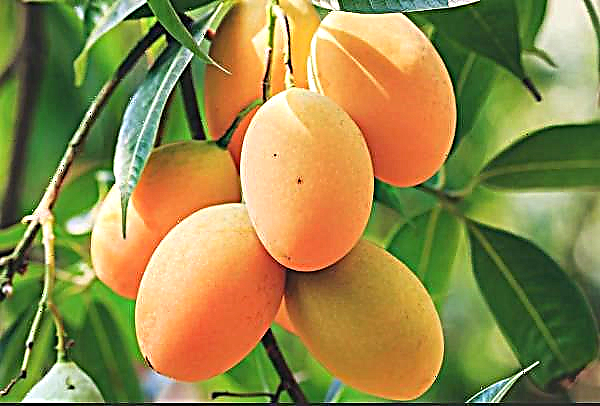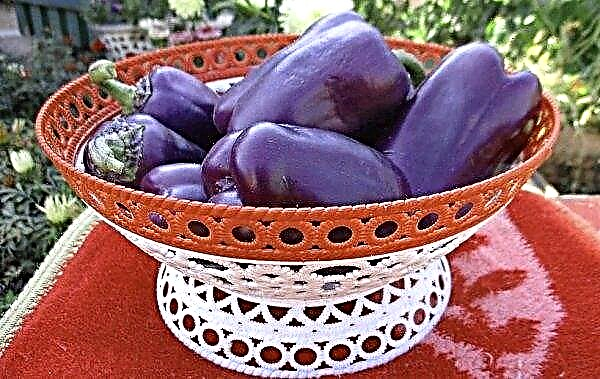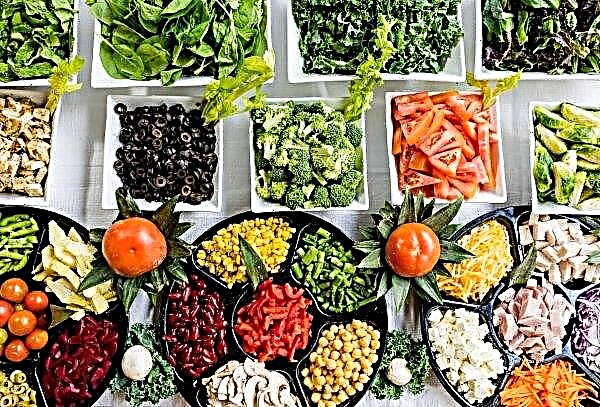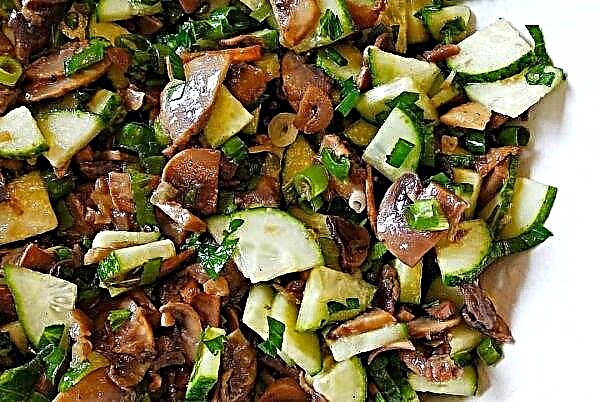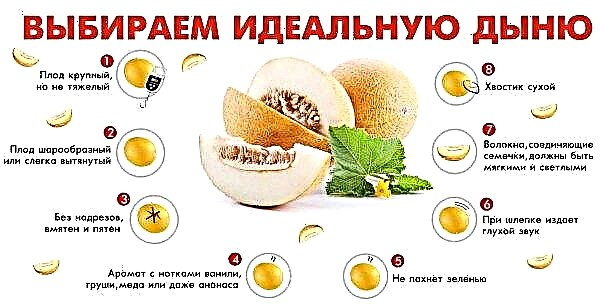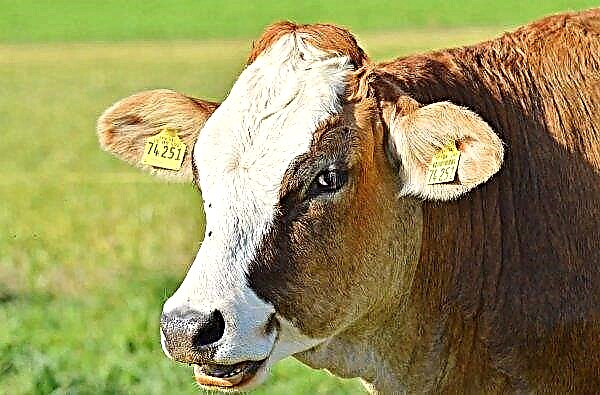Timely feeding cabbage allows you to get dense, juicy and large heads of cabbage, so it is important to choose high-quality, suitable fertilizers for the plant. When it is necessary to feed a vegetable, and which drugs are better to use - more on this later in the article.
Features feeding white cabbage
Cabbage belongs to the category of plants that prefer to grow on loose, nutritious, breathable soils with a low level of acidity. The choice of drugs for feeding the crop depends on the type of soil on which it grows. Today, summer residents to enrich the soil widely use fertilizers of various types - organic, mineral, complex, which show high efficiency in certain phases of the vegetable growing season.

Types of fertilizers
Experienced vegetable growers use three main types of nutrients to feed cabbage:
- Nitrogen: suitable for building green mass, activating the growth of the root system.
- Phosphoric: used in the phase of head formation, saturate the plant with the necessary nutritional components, increase the culture's resistance to negative factors.
- Potash: required for heading out and developing the aerial parts of the plant, play an important role in saturating the plant with nutrients.
Did you know? Cabbage leaves contain a unique rare vitamin U, which promotes scarring of stomach and duodenal ulcers, heals the gastrointestinal mucosa, speeds up metabolic processes and has a beneficial effect on metabolism.
Among nitrogen, the most popular are: ammonium nitrate, urea, ammonium sulfate. Among potash products, potassium chloride and sulfate are often used to fertilize cabbage.
In addition to minerals, organic, for example, manure or droppings are used to feed the culture, which accelerate plant growth, protect against the harmful effects of external factors, and increase resistance to pests and parasites.

Rules for fertilizing cabbage
Experts advise starting the preparation of the site for planting cabbage back in the fall. To do this, at the end of the season, you need to carefully dig the bed, loosen the soil and enrich it with organic means, for example, humus or manure. It must be remembered that the culture does not grow well in acidic soil, so it is recommended to liming the earth or, during digging, to enrich the soil with coal ash.
If it was not possible to properly prepare the site in the fall, this can be done in the spring, 1-2 weeks before the seedlings are planted in the ground. For top dressing in spring, vegetable growers are advised to use compost, which is scattered on the surface.
Important! Fertilize cabbage throughout the entire period of its growing season, starting with sowing seeds for seedlings, and ending with the period of collecting heads of cabbage.
How to grow white cabbage, feeding scheme
Refueling cabbage with valuable substances should be carried out in compliance with the rules and the scheme. Fertilizing is necessary after moistening the culture, which will protect the root system of the plant from burns. In addition, experts recommend that you do not overdo it with top dressing, since excess nutrient components can negatively affect the condition of heads of cabbage, lead to cracking and loss of presentation.
Supplementation of white cabbage seedlings
They begin to feed cabbage with vital components at the stage of seedling development.
Important! Together with recharge, before planting seedlings in open soil, it is also necessary to conduct its hardening.
For the active growth of seedlings, she needs a large amount of nutrients, therefore before planting it in open ground, fertilizers should be applied at least three times:
- The first portion of funds is paid a week after diving seedlings in separate containers. In this case, liquid mineral preparations are used, for example, a mixture of 3 l of water, 3 g of potassium chloride, 7.5 g of ammonium nitrate and 12 g of superphosphate.
- The second time the seedlings are fed 7-10 days after the first, using a solution of 1 liter of water and 2-3 g of ammonium nitrate.
- A third portion of fertilizers, using minerals, is applied 3-4 days before the seedlings are planted in open soil. For the last top dressing, a solution of 2 l of water, 4 g of potassium chloride, 6 g of saltpeter and 16 g of superphosphate is used.
Video: Topping cabbage seedlings after germination
Feeding cabbage after planting in open ground
They regularly continue to feed cabbage after it has been planted in open ground. If no nutrient preparations were introduced into the wells during planting, the first fertilizer application should be carried out two weeks after planting. As noted above, it is better to use nitrogen-containing preparations as the first fertilizers, which allow you to activate the growth of green mass.
For feeding, two types of nitrogen fertilizers can be used:
- Organics: a solution of 20 liters of water and 1 liter of liquid mullein. Under one plant, it is enough to pour 0.5 l of the mixture;
- Mineral: a solution of 20 liters of water and 40 g of ammonium nitrate.
At the first stages of the development of the culture, it is also possible to apply foliar feeding by spraying the plant with a mixture of 20 liters of water and 2 matchboxes of nitrate.
The second portion of fertilizer must be applied in the last weeks of June - the first decade of July. It is recommended to alternate organic and mineral preparations, therefore, if for the first time organics were used, then in the second it is better to opt for minerals.

The third portion of fertilizers should be applied under cabbage of late periods of vegetation. For this, it is advised to use mullein infusion and 60 g of superphosphate.
The fourth time the vegetable is fed two weeks before harvesting. In this case, a mixture of 20 liters of water, 1 liter of ash infusion or 80 g of potassium sulphide is most effective.
Important! When applying fertilizers, make sure that the solution does not fall on the foliage, since a burn may occur.
Special types of top dressing
In addition to traditional feeds, there are other, special types of fertilizing aimed at achieving a specific goal of the vegetable grower.
Nutrition for active growth of white cabbage
If after planting seedlings it grows poorly and develops, experts advise using special formulations: 2 glasses of litter or manure, diluted in 20 liters of water or 15 g of urea, diluted in 10 liters of water. Such solutions allow you to activate plant growth, increase its immunity, and contribute to the rapid rooting of seedlings.
 As a rule, such top dressing is carried out in 2–2.5 weeks after planting seedlings.
As a rule, such top dressing is carried out in 2–2.5 weeks after planting seedlings.
When feeding with nitrogen-containing preparations, the main thing is not to overdo it, otherwise the plant will accumulate a large amount of nitrates that are harmful to the human body.
Did you know? Cabbage is considered an effective remedy for intoxication. Fiber contained in it absorbs harmful substances obtained from the breakdown of alcohol, and improves the condition of a person.
How to feed cabbage to form a head of cabbage?
Early cabbage additionally needs top dressing, which contribute to better head formation. 2 weeks after the first fertilizer application, it is allowed to fertilize the crop with a mixture of: 20 l of water, 100 g of nitrophoska, 1 l of infusion of wood ash and cow manure.

When growing vegetables in a greenhouse, fertilizing with phosphorus preparations is effective, which will help the plant at the end of the growing season accumulate useful components required for the formation of a firm and large head of cabbage. The best option for feeding is superphosphate, with a phosphorus content of at least 16–18%.
Important! When cultivating a vegetable in a greenhouse, only minerals are used for fertilizer. It is impossible to use organic matter as nutritious preparations.
Fertilizing cabbage is one of the most important agrotechnical methods, allowing you to get a high-quality and decent crop of vegetables. However, to achieve success, it will not be possible to limit oneself only to timely fertilizer application. When growing a crop, an integrated approach should be used, which includes regular moistening, loosening the soil, weeding weeds, as well as protecting the plant from pests and ailments.

